Panjshir Valley likely center of resistance to Taliban rule in Afghanistan
If a military and political resistance is formed to combat the Taliban’s return to power in Afghanistan, then the Panjshir Valley less than 100 miles north of Kabul is likely to be at is center. The long, narrow valley is the one section of the country that Taliban have failed to subdue since its takeover earlier this month.
The Panjshir Valley was also the base of operations for one of the most successful militias in Afghanistan’s 10-year war against the former Soviet Union, 1979-1989 and, starting again in 1996, as the multi-ethnic Northern Alliance, which was created in opposition to the Taliban’s first attempt to rule. That resistance was led by the “Lion of the Panjshir,” Ahmed Shah Massoud, who was killed on Sept. 9, 2001, just two days before the 9/11 attacks on the United States, by two men widely believed to be Al Qaeda operatives.




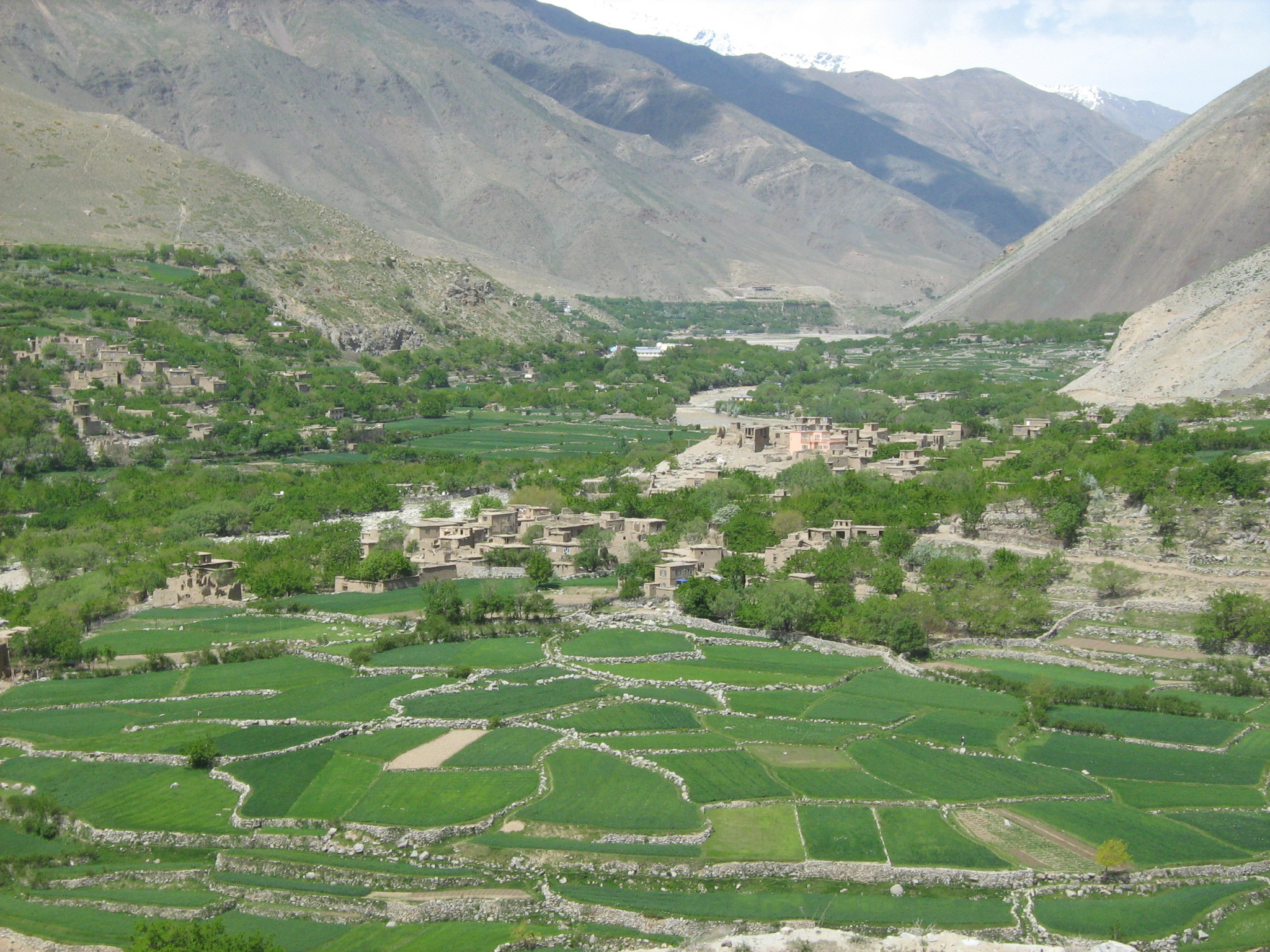

Today his son, Ahmed Massoud, has positioned himself as heir to his father’s legacy. Among his allies are Amrullah Saleh, Afghan Vice President under President Asraf Ghani, who fled the country as the Taliban were capturing the Afghan capital, Kabul. Saleh has since declared himself the “acting president” of the country. Other allies, according to published reports, include Abdullah Abdullah, the former Chief Executive of Afghanistan from 2014 to 2020 and leader of the High Council for National Reconciliation since 2020. Abdullah was also a senior member of Northern Alliance and was an advisor to the senior Massoud.
Since the Taliban’s latest takeover, the younger Massoud has publicly declared his intent to engage in peace talks with the Taliban, while also stating his willingness to fight the Taliban if they attempt to invade the Panjshir Valley.
Don’t forget our homeland, say Afghan-Americans in Albuquerque
About 150 people, mostly Afghan-Americans, rallied Saturday in Albuquerque’s downtown Civic Plaza, calling for more public assistance for Afghans seeking to leave their homeland in wake of the Taliban takeover of their homeland a week ago. Signs and speakers also voiced support for human rights, particularly free speech, women’s rights, and a peaceful resolution of the longstanding conflict n Afghanistan. At least one sign expressed the holder’s distrust of the Taliban regime.









Streets of Kabul, 2009-2011, part 2

The Kabul River, which runs the middle of the city, was polluted and littered with trash, yet many of the poorest Afghans still hauled water from it and washed clothes in it. 
Child climbs to Bala Hissar, the ancient fortress just south of Kabul. It was common to see kite-flyers of all ages using the elevated site to launch their kites into the air. 
Rosy-cheeked produce seller. 
Social services in Afghanistan were woefully inadequate for wounded military veterans, disabled persons, drug addicts, and people experiencing homelessness. This particular image also strikes me as painfully sad, as though it could have been taken from an Afghan production of the Samuel Beckett play Waiting for Godot. 
Kabul City is situated in a narrow valley at 5,900 feet of elevation on the edge of Pamir-Hindu Kush earthquake zone. Twenty years ago, when the U.S.-led war began, Kabul’s population was 2.5 million. Today it is more than 4.3 million. Newcomers are typically poor and displaced from their villages by war, want, or increasingly drought. Because the valley floor was largely developed, many newcomers built their shelters up the walls of the valley, reached by steps like these, cut into the soil. One significant seismic event could bring much of that housing to the bottom of the Kabul River valley. 
Countless shops sold products of all sorts, much of which was imported from neighboring countries, like Pakistan, India and China. 
Bicycles were widely used by men and boys, though I don’t recall ever seeing a female cyclist. 
Mobile street vendor selling drinks. 
I was the youngest person on this pendulum ride at the Kabul Zoo by about 35 years (no exaggeration) in May 2011. (Note the small ferris wheel to the left.) Most public space is decidedly masculine and the ratio of boys to girls at the zoo on this Friday, the Islamic day of public prayer, was least 10-to-1. Even still, the zoo is one of the few public spaces in which boys and girls mix at all, university students told me. Afghanistan is a young country, with about 41 percent of the population age 14 or younger. About 63 percent of the nation’s population of 39 million age is age 25 or under.. 
Nan, a flatbread, was baked daily at small bakeries throughout the city. Locals told me the shapes of the loaves and the patterns stamped on them often revealed the ethnic identity of the baker. 
Family in transit.

Family running errands in Kabul. 
Men delivering produce to, or from, the street markets. 
The tattered political candidate flyers on this wall in 2011 were likely from the 2009 elections. The Afghan Constitution created after the defeat of the Taliban in 2001 requires that 25 percent of the seats in the lower house of Parliament are filled by women, though they were largely ignored by their male counterparts in 2011. 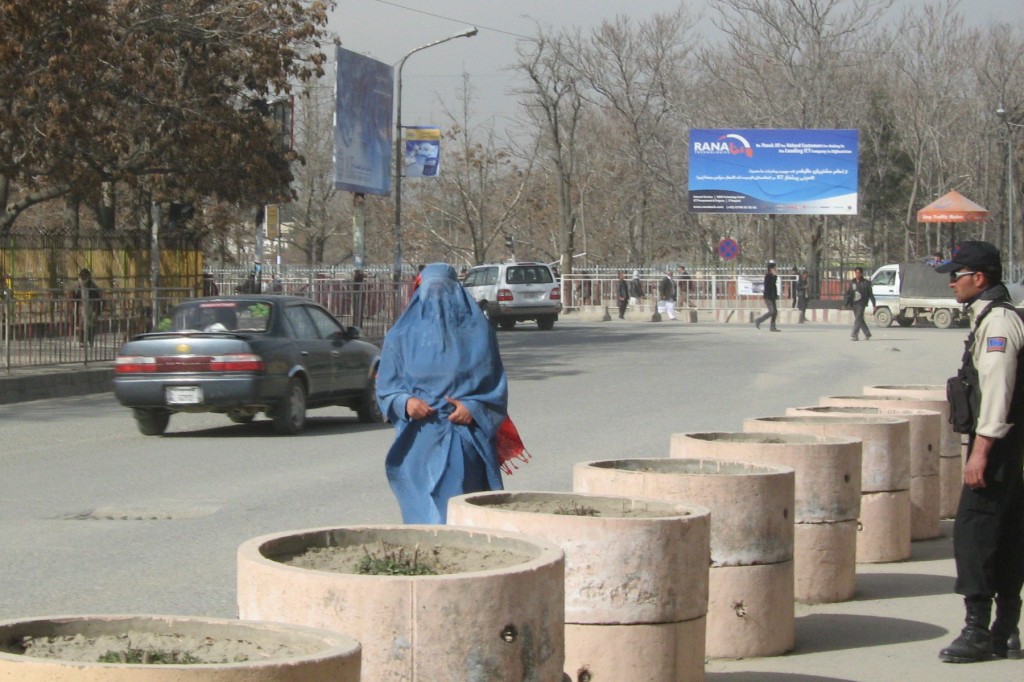
Earth-filled concrete barriers like these were used for traffic control and more specifically to prevent car bomb attacks. 
Boys pose at one of the city’s many produce markets. 
A portrait of Abdul Ali Mazari, a national hero for ethnic Hazaras in Afghanistan, in March 2011 that recognized the 16th anniversary of his death. Mazari, a former anti-Soviet mujahideen, is credited with uniting the largely Shi’a Hazara people during the sectarian wars that followed the Soviet departure and the ascendancy of the Taliban in 1996. Mazari was reportedly thrown to his death in 1995 from a helicopter by members of the Taliban. 
View of the outdoor patio from inside the Serena Hotel, which offered the poshest accommodations in Kabul, making it the default hotel for foreign diplomats and wealthy travelers. It also featured a killer buffet, which few of the locals could afford.
Streets of Kabul, 2009-2011, part 1

This man, with the help of our taxi-driver/translator, gave a colleague and I a tour of Id Gah Mosque, the second-largest mosque in Kabul, in April 2009. The two boys quietly trailed our small procession. 
A sign painter practices his craft on a storefront window of a downtown business in Kabul in 2009. The script is Dari, or eastern Persian, which is the dominant language in Afghanistan. 
Melvin Sterne, a colleague of mine, and I in front of the Shah M. Book Co., which included a good section of English-language works, in downtown Kabul in 2009. Melvin wanted to buy a few of books but when he attempted to pay for them realized that he had forgotten his wallet. Before I could offer to pay, the clerk said Melvin should take the books and pay for them the next time he was is downtown Kabul. I can’t imagine that happening to an Afghan visitor in the States. 
Women shopping in downtown Kabul. 
Produce vendor passes Afghan women. 
Human labor is still widely used to move products throughout Kabul. 
Sometimes Kabul’s streets seemed like a Depression-era circus. 
Women and child work their way through one of Kabul’s market districts. 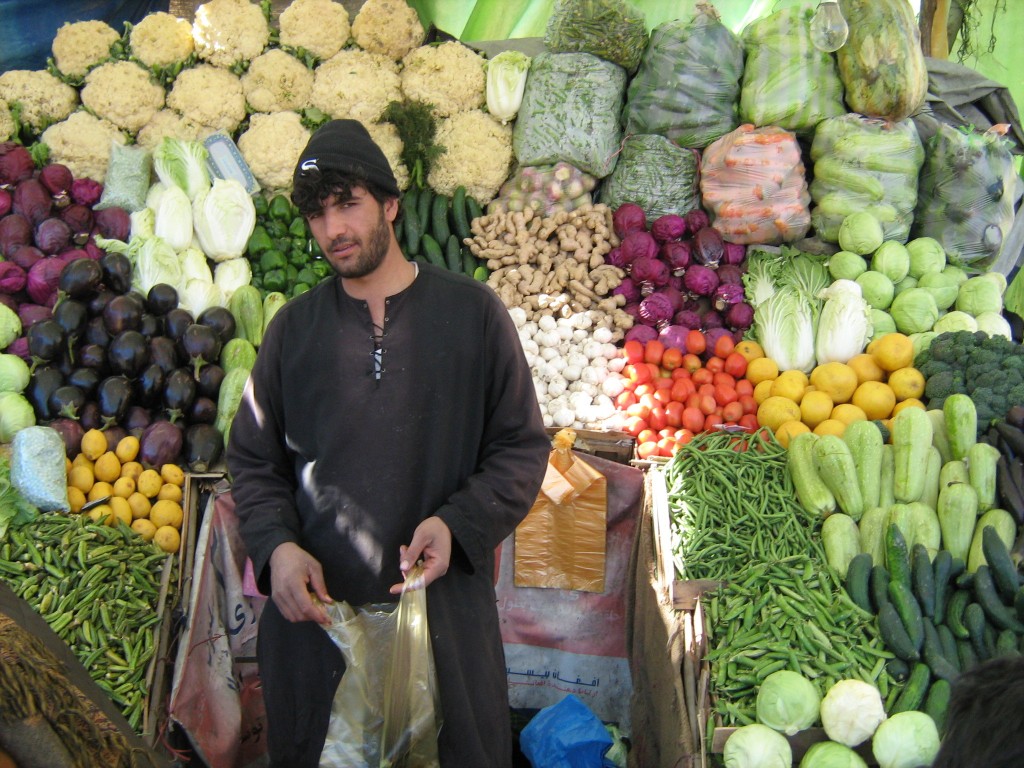
Produce was largely grown locally but most packaged foodstuffs were imported from Pakistan or elsewhere. 
Food shopping by faculty and staff at the American University of Afghanistan required university transportation and drivers. 
Man crossing street in Kabul. 
We could only enter a Shi’a shrine on the elevated outskirts of Kabul after the women, accompanied by a boy, had left. Foreigners don’t warrant a second look from local residents in the downtown or near the visitors’ favored restaurants, but generate plenty of curiosity elsewhere. 
Cake being loaded for delivery. 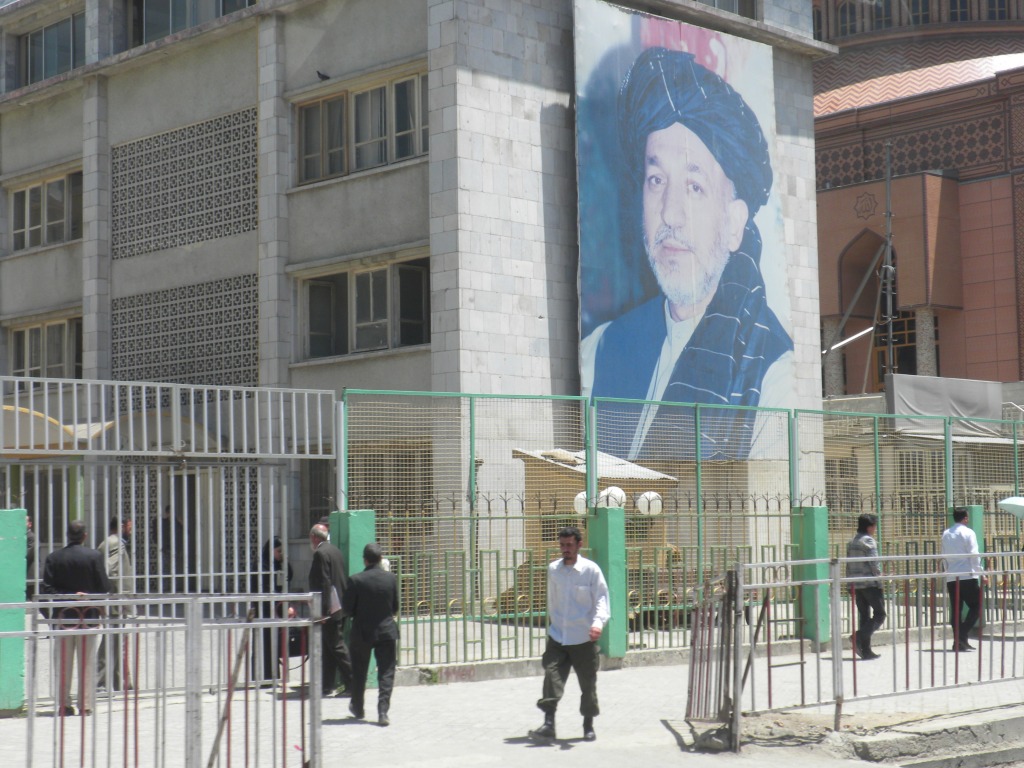
Hamid Karzai won a second five-year term as president of Afghanistan in 2009. 
Grains and dried beans for sale. 
Whenever we went grocery shopping we were greeted by children seeking handouts. 
Kabul’s streets were filled with every conceivable form of transportation. 
If you wanted your meat fresh, then go no further than the local butcher.
Before the Taliban dynamited the Buddhas of Bamiyan in 2001

“During the dawn of August 11th, 1998, Taliban troops destroyed the library of the Foundation Nasser Khosrow [in Puli Khumri, Afghanistan]. With its 55.000 volumes, it was considered by Afghans themselves like one of the most valuable and beautiful collections of their nation and their culture. It lodged 10-centuries-old Arabic manuscripts, texts in English and Pashtu, and an impressive Afghan heritage written in Persian…But maybe the most appreciated treasure was one of the six remaining copies of the Shahnama (Book or Epic of the Kings), by Persian poet Firdusi Tusi (935-1020); this one was dated in XII century.”
Edgardo Civallero, 2007, From “When memory is turn[ed] into ashes…” Access at https://www.aacademica.org/edgardo.civallero/113.pdf
Herat, Afghanistan in 2009: a decade before the return of the Taliban
The stunning collapse of the American-backed Afghan government in Kabul earlier this week rekindled memories created a decade ago in that war-battered country. In March 2009, a three-day weekend in Herat, the ancient Afghan city near the borders with Iran and Turkmenistan, was a welcome break from the tight security restrictions of the American University of Afghanistan in Kabul for my colleagues and me. We discovered that Herat City, despite being ravaged over centuries of conquests, had more of its historic infrastructure intact than Kabul, the capital.








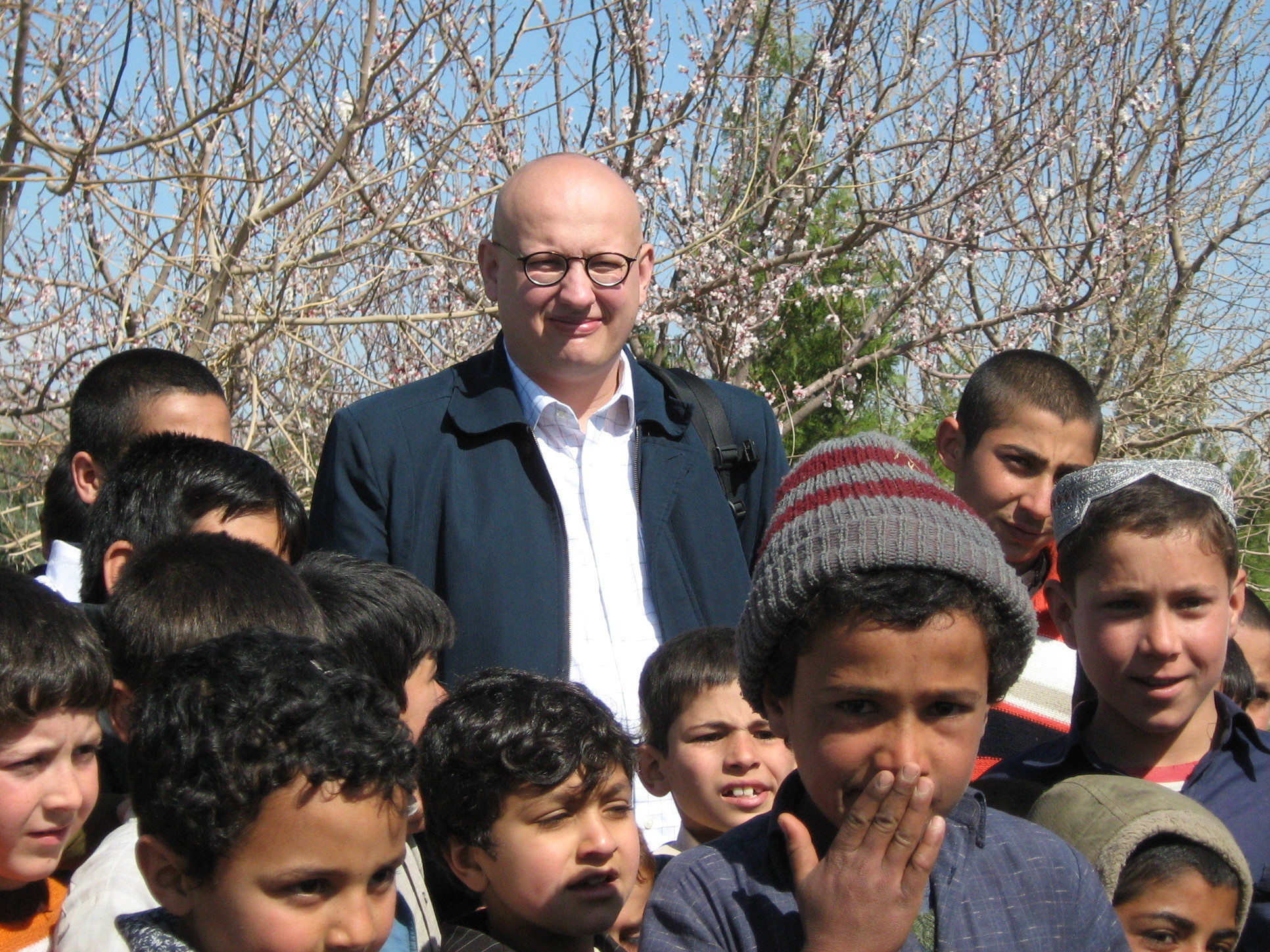






















Trump may yet make up a military uniform for himself

The Narcissist in Chief has disappointed me. I thought that by now he would have shown up at some ceremonial function in a newly designed Commander in Chief uniform—crafted, of course, by his fashionable daughter, Ivanka. I envisioned a largely white military uniform festooned with lots of gold brocade, something on the order of the white uniform worn by the now deceased Chilean dictator, Augusto Pinochet.
I thought a spiffy new uni was a foregone conclusion after Trump attended France’s Bastille Day military parade with French President Emmanuel Macron in July 2017 and returned with the idea that the United States should have its own military parade on the Fourth of July. The two-hour Bastille Day parade, which featured heavy artillery, including tanks, “was one of the greatest parades I’ve ever seen,” gushed Trump at the time. “We’re going to have to try to top it.”
Trump, who received five deferments from the military draft during the Vietnam War, got his parades the next three years, but they were pared down, in part because a parade of the scale he imagined came with a price tag of $92 million, according to one estimate.
There’s still time for him to sport a new uniform, but perhaps the reason he hasn’t already is because of concern that the uniform cap would mess up his hair-do, which he recently admitted “has to be perfect.” I think we may still yet to see him in one. My guess it will be within a day or two of the Nov. 3 general election, when he will announce that he is remaining in the White House as president for life.